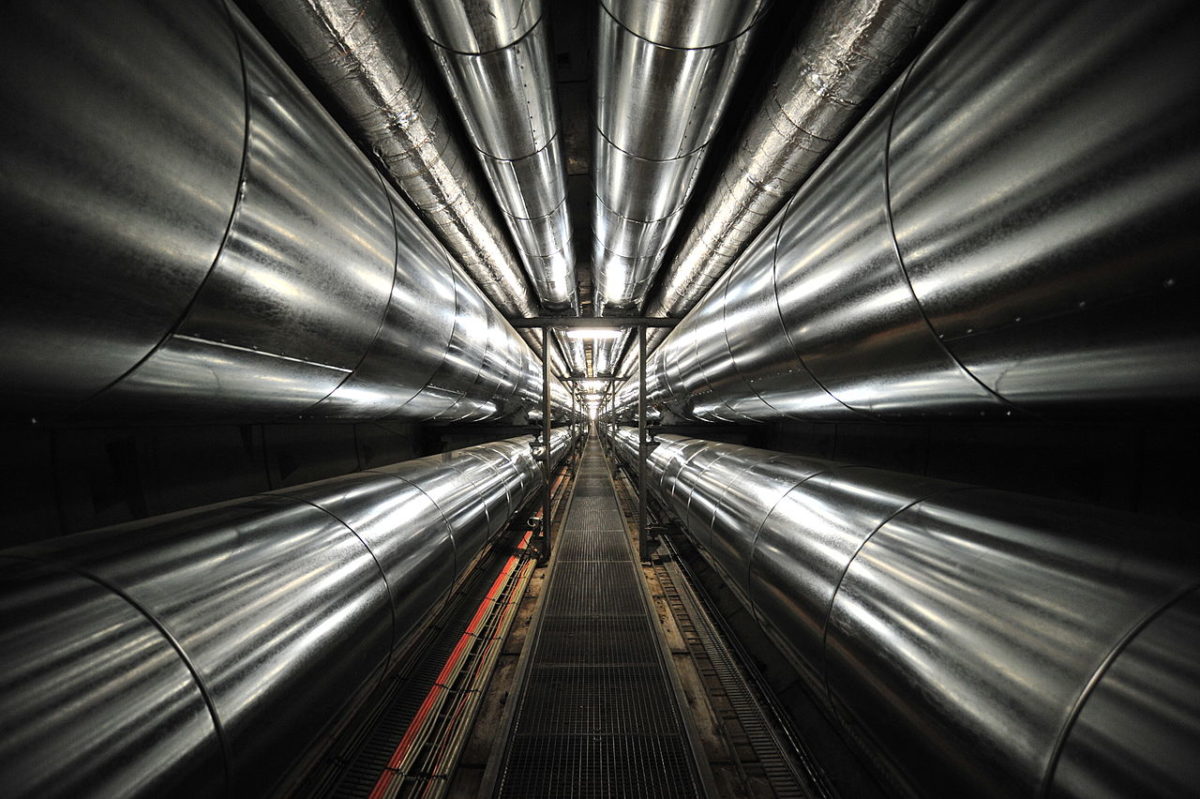Researchers from the University of Rovira i Virgili in Spain have evaluated different control strategies for heat pump operation in a solar-assisted district heating system (SDHS) for space heating (SH) and domestic hot water (DHW) with seasonal storage serving a small community of 10 buildings located in Madrid.
According to them, integrating heat pumps into an SDHS may help reduce storage heat loss and stabilize the overall temperature of the thermal network to facilitate low-temperature district heating. The system consists of solar thermal collectors, a seasonal storage tank (SST), a DHW storage tank, a water-to-water heat pump unit, and an auxiliary gas heater.
In this configuration, the heat generated by the heat pump is used to provide heat at around 50 degrees Celsius for SH or supplied to the SST for charging up the heat stored. If the solar thermal installation, the heat pump, and the SST are not able to meet the heat demand, the auxiliary gas heater comes into play. Each building in the complex has 28 apartments with an area of 90 m2 and the estimated total demand for each building is €191.34 MWh per year. The prices of gas and electricity in the area are estimated at €0.0526 and €0.1873 per kWh, respectively.
Two control strategies are proposed for heat pump operation: The Control (A) mode, through which the heat pump works when the mean temperature of the SST is lower than a reference heat pump turn on temperature; and the Control (B) mode, through which the heat pump works if the solar collector temperature is lower than the mean SST temperature. “In these modes of operation, the heat generated by the heat pump in control (A) and (B) will be transferred to either the SST or the DHWT based on demand,” the scientists emphasized. “In case of insufficient supply from SST or DHWT, the auxiliary heater is turned on.”
The performance of the system was simulated through the TRNSYS software over a typical year of operation. Five optimization scenarios were considered: A minimum cost solution with no limits on possible gas usage; three scenarios with gas limit of 25%, 50%, and 75%, respectively; and a solution with minimal use of gas and high shares of solar thermal energy production.
Popular content
The results of the simulation showed that with the Control (A) strategy, the net present cost of the system under scenario 1 is €72.2 and €144.7/MWh under scenario 5. The system payback period ranges from 31 years under scenario 1 and 63 years under scenario 5.
With the Control (B) approach, which always keeps the share of the solar thermal energy higher, the system achieves a net present cost of €67.12/MWh under scenario 1 and its payback period ranges from 29 to 59 years. “Besides, using control (B) reduces the usage dramatically for HP since under this control, the HP is utilized only to cover the shortage in SST during the high demand period of the season,” the academics further explained. “Well-designed heat pump control can bring techno-economic benefits in the district heating.”
The proposed system is described in the paper “Techno-economic analysis of control strategies for heat pumps integrated into solar district heating systems,” published in the Journal of Energy Storage.
Recently, a consortium of scientists and companies led by the Delft University of Technology (TU Delft) has demonstrated the technical and economical feasibility of solar-powered heating of buildings in a given neighborhood, without the need for an external heat source. The proposed solar heating network is based on photovoltaic-thermal (PVT) solar systems that can generate both heat and electricity on the roof, a very-low-temperature heat network linked to heat or cold storage under the ground, and the use of heat pumps.
This content is protected by copyright and may not be reused. If you want to cooperate with us and would like to reuse some of our content, please contact: editors@pv-magazine.com.



By submitting this form you agree to pv magazine using your data for the purposes of publishing your comment.
Your personal data will only be disclosed or otherwise transmitted to third parties for the purposes of spam filtering or if this is necessary for technical maintenance of the website. Any other transfer to third parties will not take place unless this is justified on the basis of applicable data protection regulations or if pv magazine is legally obliged to do so.
You may revoke this consent at any time with effect for the future, in which case your personal data will be deleted immediately. Otherwise, your data will be deleted if pv magazine has processed your request or the purpose of data storage is fulfilled.
Further information on data privacy can be found in our Data Protection Policy.